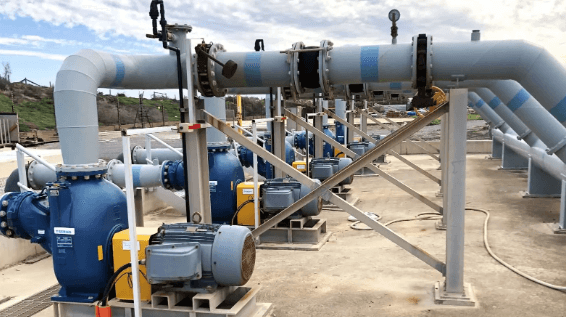Sewage pumping stations now and again hidden away from sight, expect a fundamental part in dealing with the erratic association of wastewater structures that keep our metropolitan networks moving along according to plan. These uncelebrated yet genuinely incredible individuals of the metropolitan structure are fundamental for keeping up with general prosperity, safeguarding the environment, and guaranteeing the useful evacuation of wastewater.
Understanding Sewage Pumping Stations
Sewage pumping stations are key pieces of common wastewater systems, particularly in metropolitan locales where the general population thickness requires a mind-boggling starting point for wastewater the chiefs. These stations are conclusively arranged at discouraged spots in the sewage association, where gravity alone can’t move wastewater to treatment workplaces or delivery centers.
The fundamental capacity of a sewage pumping station is to lift wastewater from lower levels to higher ones, where it can continue with its outing through the sewage system. This is achieved through areas of strength that affect the wastewater through pipelines, conquering gravitational hardships, and shifting domains.
Parts and Action
A typical sewage pumping station involves a couple of major parts:
Pumps: The center of the station, pumps come in various types and sizes depending upon the station’s capacity and necessities. Outspread pumps are consistently used because of their viability and unwavering quality.
Wet Well: Here wastewater accumulates before being pumped out. The wet well is intended to hinder flood and keep a consistent movement of wastewater to the pumps.
Control Structures: Significant level control systems screen the movement of wastewater, activate pumps depending on the circumstance, and ensure the station works. These structures could incorporate sensors, alerts, and automated controls to administer pump movement and maintenance.
Aroma Control: Since sewage pumping stations oversee rotten wastewater, smell control structures are as often as possible to restrict awful scents in the encompassing locale.
Importance in Wastewater The board
Sewage pumping stations are basic to the suitable working of wastewater treatment systems and the insurance of general prosperity and the environment. Without these stations, sewage would decay, prompting reinforcements, gushes out, and potential prosperity chances. By capably moving wastewater to treatment workplaces, pumping stations help with forestalling contamination of streams and groundwater sources, protecting conditions and general wellbeing.
Challenges and Maintenance
No matter what their essential work, sewage pumping stations face different troubles:
Maturing Structure: Many pumping stations all around the planet are maturing and needing updates or replacement. Age-related mileage can provoke breakdowns and aggravations in wastewater streams.
Power outages: Sewage pumping stations rely upon the ability to work. Power outages, especially during crazy environmental events, can upset pumping undertakings and lead to pours out.
Sediment and Junk: Wastewater often contains solid trash and buildup that can assemble in pumps and pipelines, prompting deters and diminished efficiency. Standard maintenance is central to preventing blockages and assurance smooth action.
Future Standpoint
As metropolitan networks create and metropolitan peoples increment, the interest in capable wastewater on the board will continue to rise. Accordingly, sewage pumping stations ought to create, consolidating pattern setting innovations for additionally created efficiency, unwavering quality, and maintainability. Improvements like wise sensors, insightful examination, and sustainable power compromise hold assurance for upgrading pumping station undertakings and lessening regular impacts.
Conclusion
Sewage pumping stations could work painstakingly hidden, yet their importance could never be more critical. These unnoticed yet genuinely incredible individuals attentively play out the crucial undertaking of moving wastewater through the intricate association of sewage systems, protecting general well-being and the environment meanwhile. As we make a pass at extra legitimate and flexible metropolitan regions, it’s essential to see the basic work that sewage pumping stations play and put assets into their maintenance, modernization, and improvement to meet the advancing necessities of metropolitan organizations.
FAQs:
What is a sewage pumping station?
A sewage pumping station is a critical piece of common wastewater systems, intended to lift wastewater from lower ascends to higher ones for useful vehicles to treatment workplaces.
How do sewage pumping stations work?
Sewage pumping stations are areas of strength for utilization to push wastewater through pipelines, defeating gravitational challenges. They furthermore unite control structures, wet wells, and aroma control parts to ensure capable movement.
What troubles do sewage pumping stations face?
Sewage pumping stations experience challenges like maturing establishment, power outages, and buildup collection. Ordinary maintenance is crucial to hinder breakdowns and aggravations in wastewater streams.

